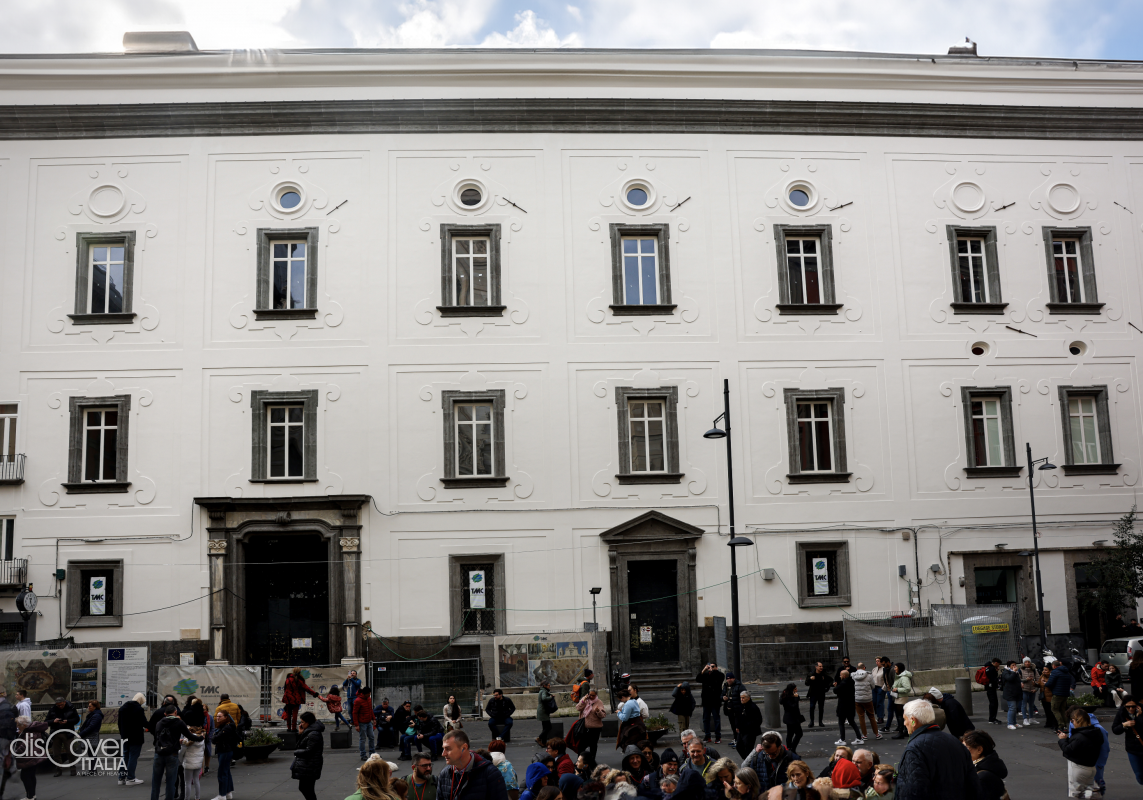The Girolamini complex is really rich in treasures, in addition to those of the church of the same name. Let's start with the Quadreria, which has works by famous artists, especially from the 17th and 18th centuries and which, together with the Library, is located on Via Duomo, behind the church.
The collection is the result of various donations, including the most substantial one from Domenico Lercaro, a renowned tailor and textile merchant. It is well known that the main core of the Girolamini picture gallery comes largely from his collection, and in fact Lercaro appears in documents as a key figure in the history of the complex. Originally, the seat of the picture gallery was the major sacristy located behind the apse, but after several years it was decided to move the works by creating an exhibition space for the purpose, according to new museographic criteria. It was only recently, in 1995, that the works of art were finally placed in some rooms on the second floor of the convent. The works in the picture gallery range from the early sixteenth century to the mid-eighteenth century.
Sixteenth-century works include an Adoration of the Magi by Andrea Sabatini, a Campanian painter working mainly in southern Italy in the first half of the 16th century, and a St. Sebastian by Giuseppe Cesari, better known as the Cavalier d'Arpino. The highlight of the collection, however, is the 17th century. It houses works of great value that span the entire century, starting with early Caravaggesque painters such as Battistello Caracciolo and Jusepe de Ribera and ending with some sketches by Francesco Solimena. Also of notable importance are the canvases of Guido Reni, an artist of great renown who, together with Lanfranco and Domenichino, brought the Baroque painting of Emilia to Naples. Unmissable are the Neapolitan painters Massimo Stanzione, Fabrizio Santafede, Andrea Vaccaro, and the Apulian Cesare Fracanzano.
The Library
The Girolamini Library is one of the richest in the Mezzogiorno with a collection of about 160,000 volumes. It was opened to the public in 1586 and is the first public library in Naples. It has two main holdings: the Philippine Fund and the Valletta Fund. The former represents the original core of the library and includes texts on theology, ecclesiastical history and Holy Scriptures. The second fund, on the other hand, presents mainly legal, philosophical, cultural and literary volumes from the private library of Giuseppe Valletta, a well-known 17th-century Neapolitan jurist. Upon the latter's death, his library holdings flowed into the Girolamini Library through the intermediary of philosopher Giambattista Vico, who in 1727 suggested to the Oratorian fathers that they purchase the precious fund containing more than 18,000 texts. Over the years other funds have been added, such as the Gervasian one specializing in volumes on archaeology and numismatics. The Girolamini Library, since its opening, has been the scene of important cultural exchanges between laity and religious, and the fact that it was public testifies to the Congregation's willingness to go beyond the closure of the Counter-Reformation period to open up to new areas of knowledge.
The Cloisters
There are two cloisters in the complex: the Chiostro degli Aranci and the Chiostro della Porteria. The former, also known as the Great Cloister, dates back to the 1730s and was built to plans by Dionisio Nencioni di Bartolomeo and Dionisio Lazzari. In it we appreciate the monumental arches separated by pilasters and capitals. On the upper floor, however, we have Tuscan-style gray piperno windows that rhythmically mark the space. The second cloister, occupying part of Palazzo Seripando, is known as the Small Cloister and is the oldest in the complex. It was built to a design by Giovanni Antonio Dosio with the help of Dionisio Nencioni di Bartolomeo. Of particular interest is an 18th-century turret with a clock, beneath which is a Madonna della Vallicella in bas-relief.
Information:
Opening: Monday through Friday 8:30 a.m. to 7 p.m. - Saturday and Sunday 8:30 a.m. to 2 p.m.
Full price ticket: 5.00 €
Reduced ticket: 2.50 €




Comments powered by CComment